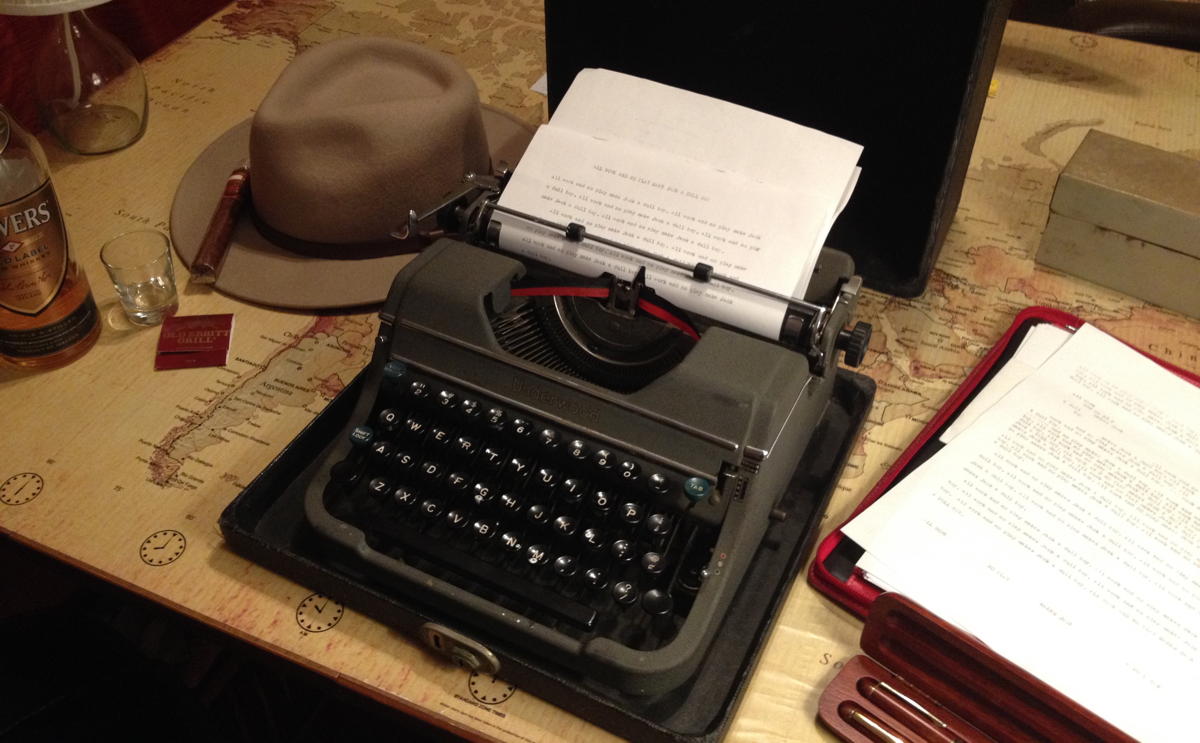The odd expectations of typewriter users
I was trying to find some information about the transitional period when computers were just becoming popular and typewriters were trying to be a little more like computers, and I discovered that you can still buy typewriters on Amazon.
Cool. But the comments are a laugh. I read the comments for the Brother SX-4000• and wasn’t sure if they were real or a joke. The most common complaint: typewriters are noisy. “Too loud.” “The only drawback is the noise.” And, my favorite, “This machine is much to noisy with three loud clicks for each boldface character.”
The latter reviewer also complained that his wife had vision problems, and was unable to see what she was typing. Did he expect the size of the tiny LCD screen to be software configurable? Or for the size of the typewriter’s daisy wheel to be software configurable? Or for the font weight to be software configurable? The size of the text is obviously bounded by the size of the LCD screen and by the physical size of the type ball. Making it bold means having to hit the paper multiple times slightly apart.
But I’m unsure about this reviewer who called Brother technical support:
…he stated that in order to continue, he wished for more information but that if I didn’t want to give any personal information, I had to say “refuse” or “continue.” I said I just had some questions because I did not think he would need any personal info if I just wanted some answers without committing to buy anything. To my surprise, the gentleman stated again (quickly and abruptly, like the first representative), “In order to continue, you must say “Refuse” or “Continue!”
This felt very strange to me. I felt very robotic and awkward and forced myself to do what he told me to do—i.e.; say “refuse.”
Were they talking to an automated support line? Filtered through another person’s description, it’s hard to tell. I have only seen that behavior when a computer was on the other end, but the reviewer goes on to say that they asked questions and received serial numbers in response; however, they don’t describe how those questions went. So I guess it might have been that Brother’s call line just has very strict rules about when not to ask about personal information.
The rest of the reviews seem pretty positive. Though, if I had my choice, I’d get a typewriter that looks more like this:
- February 28, 2017: Discretely and with quiet strength: the Underwood Champion Portable
-

Beware: typewriters are a gateway drug into whiskey-drinking, cigar-smoking, and fedora-wearing.
The typewriter is one of two mass inventions that made the modern age. Without the typewriter there is no personal computer. And the typewriter in its day meant clear and readable, precise communication between individuals. It also meant the modern novel and the modern author, who writes books by the sheet and box-load. The typewriter meant mass-producing authors and not just books. In this way, the typewriter also created the modern reader, by making it possible to stock large bookstores.
If I had my choice, I wrote six years ago, I’d get a typewriter that looked like the Underwood No. 5. It looks vaguely like one of those over-cerebral aliens with huge foreheads. It leaves no question that it’s a serious machine.
A little over a year ago, browsing through the San Diego swap meet, I met a different Underwood, a portable Champion. It’s much sleeker than the No. 5 and I immediately began revisiting what I really wanted in a typewriter. I had envisioned the No. 5 as more of a decoration than a tool, but the Champion looked like something I might actually use. By the time I finished wandering the swap meet, I had decided to try: I offered the dealer a much lower amount than the asking price, in cash, and walked out with my first, and still only, typewriter.
Until this, I never really used a typewriter to write. In grade school everything was handwritten (to the chagrin of the nuns) and in high school, I tried, once, to type a paper on my mom’s undersized plastic portable, but it was easier to write a word processor on my TRS-80 and type there. The keyboard was nicer, and the output was more readable.1
I took typing in high school one semester, but it was all practice. I don’t even remember if the typewriters in that classroom were available for typing papers for other classes. As I recall, it never occurred to me to ask.2
- Brother SX-4000 Electronic Typewriter•
- I haven’t used a typewriter in at least a decade, so I have no idea how this compares. It’s the comments that are interesting.
- Underwood No. 5: Richard Polt at The Classic Typewriter Page
- “This is the most successful typewriter design in history. Appearing shortly before 1900, the Underwood established the stereotype of a typewriter until the introduction of the IBM Selectric in 1961. When the Underwood was first introduced, it was only one of hundreds of competing and extremely varied typewriter designs. But by 1920, almost every typewriter imitated the Underwood.”
More typewriters
- Discretely and with quiet strength: the Underwood Champion Portable
- The ultimate distraction-free writing app is a typewriter.

